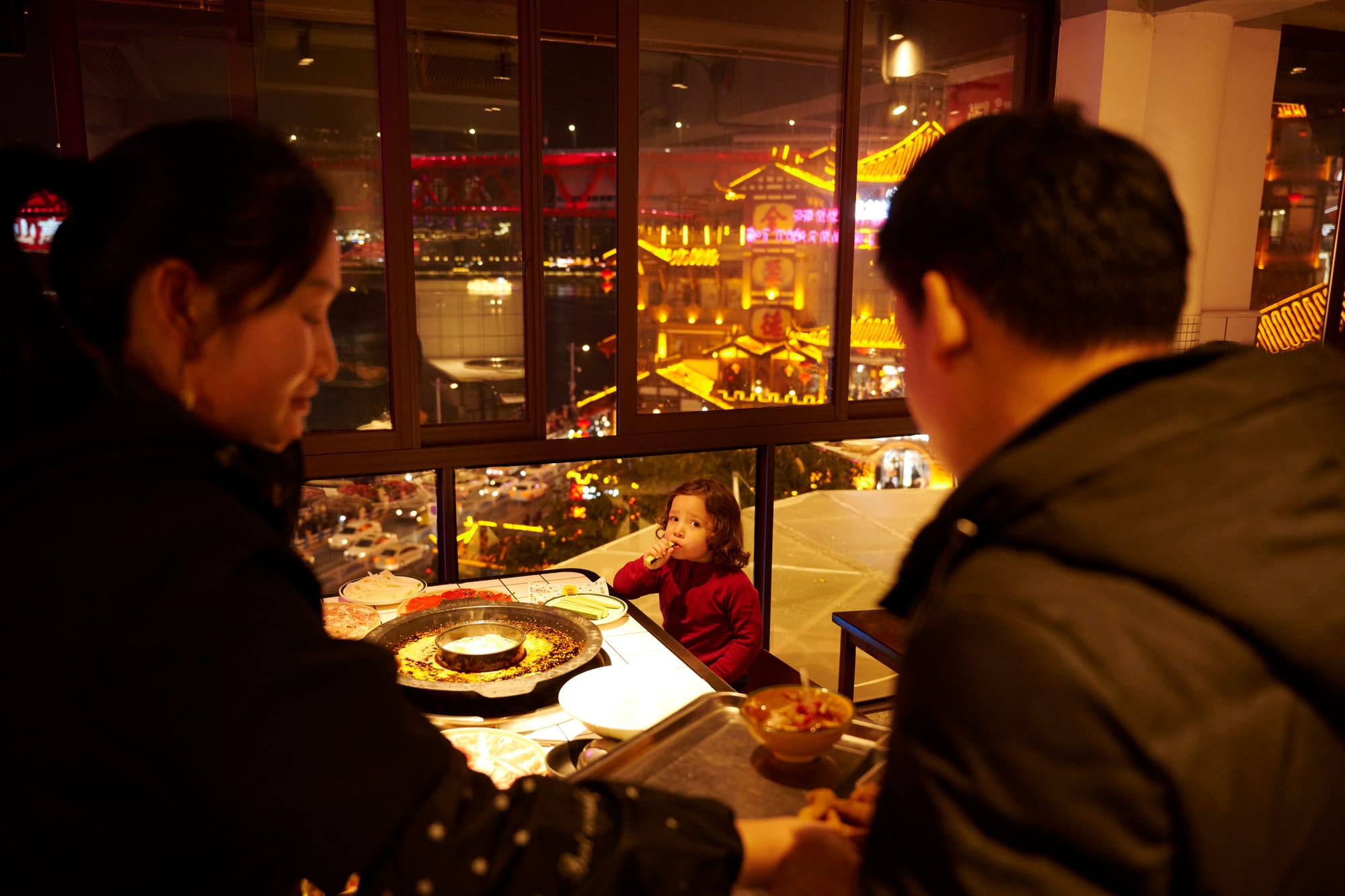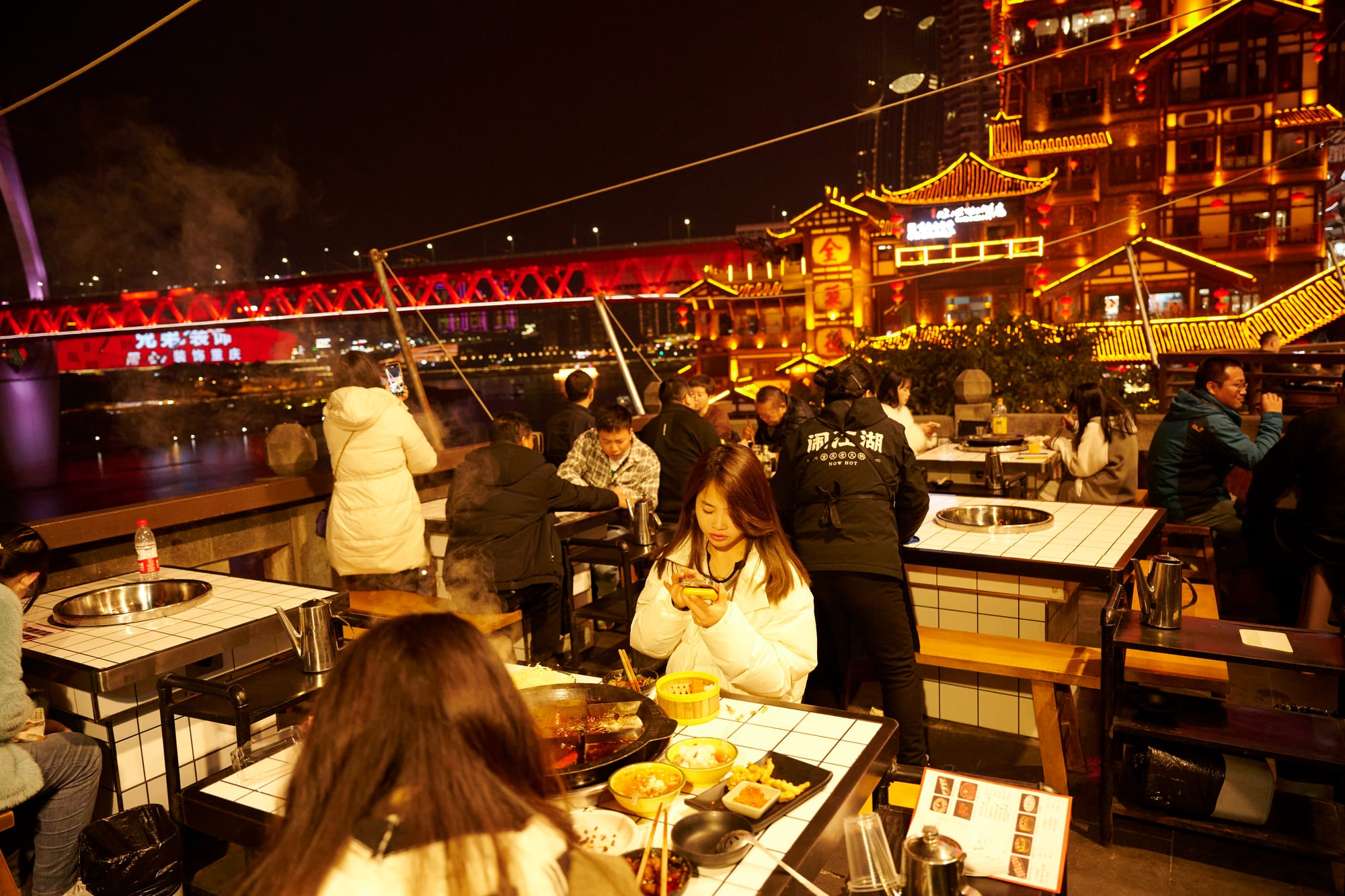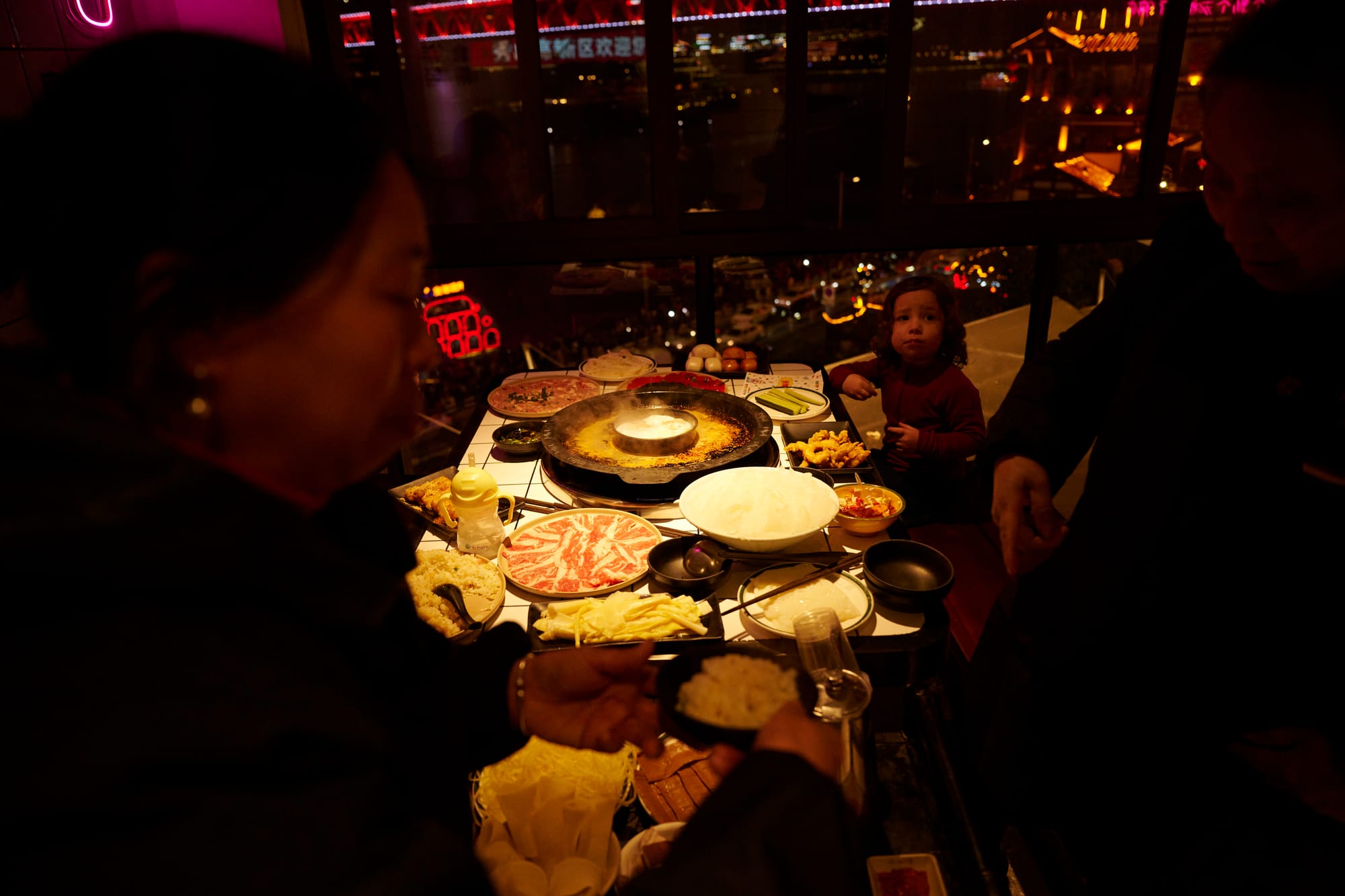
Chongqing Hot Pot for Beginners: Complete Guide + Menu Help
A First-Timer's Guide to Ordering, Eating & Enjoying China's Famous Hot Pot (With English Menu Guide)
Share this post:
Last Updated: December 2024
Introduction
Staring at a Chongqing hot pot menu can feel like trying to decode a secret message.
Our first time was exactly like that - standing at the restaurant entrance, overwhelmed by the sights and smells, wondering what all those Chinese characters meant and if we'd accidentally order something too spicy for our daughter to eat - we almost did.
Chongqing hot pot can be intimidating, which is why I created this guide to make your first hot pot experience easier. I also included real restaurant menus so that you can study it before the trip!
🌶️ Spice Levels: Mild to Extra Hot
💰 Cost: ¥50-150 per person
⏱️ Time Needed: 1.5-2 hours
👶 Family-Friendly: Yes (with mild broth option)
💡 Pro Tip: Order half spicy/half mild broth for first-timers
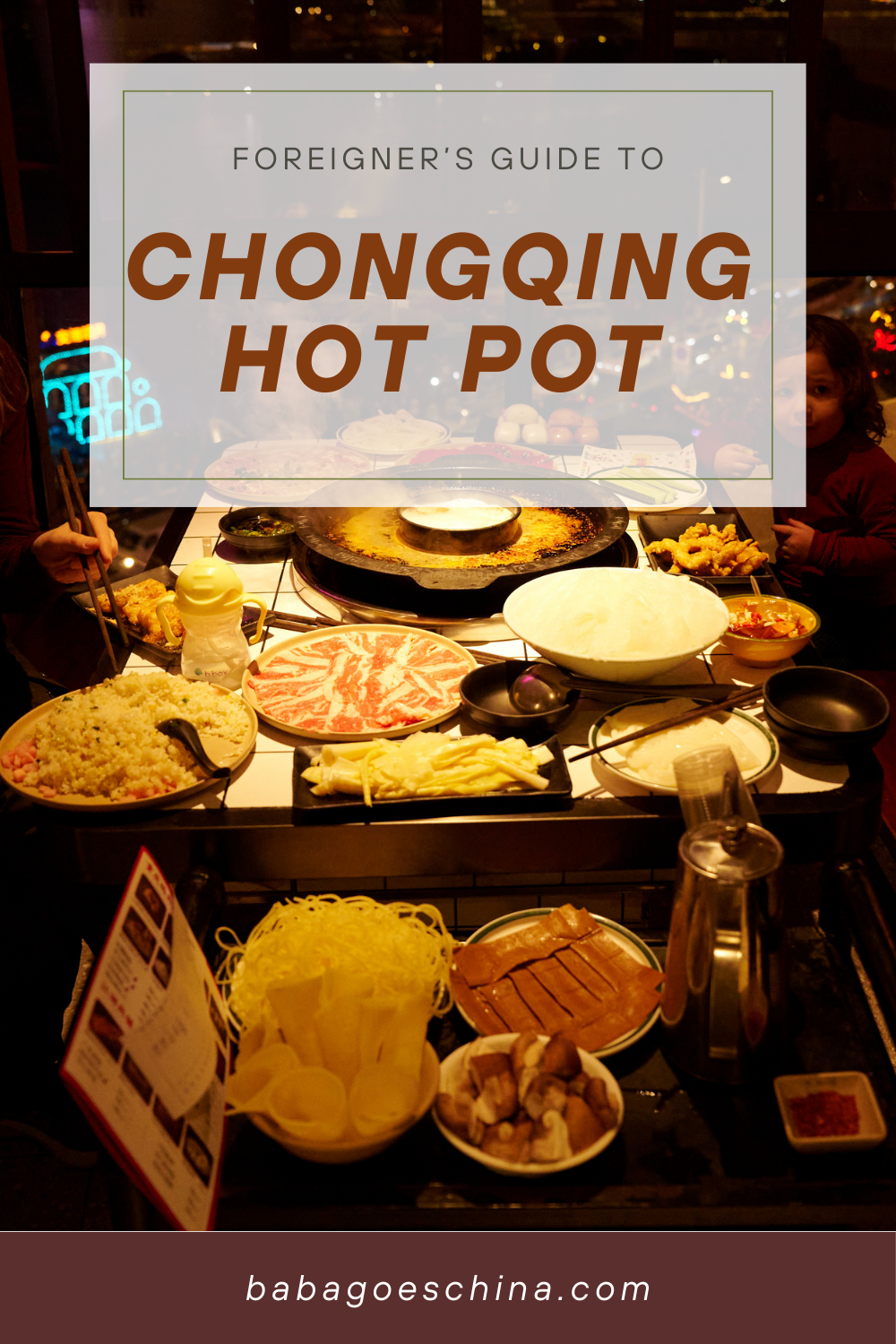
What is Chongqing Hot Pot?
At its core, Chongqing Hot Pot is a simple concept – a simmering pot of broth infused with plenty of spices, served alongside a selection of raw ingredients for diners to cook on their own.
The broth is the star of the show, typically divided into two varieties: spicy and non-spicy. The spicy broth, known for its bold red colour and tongue-tingling heat, is made with Sichuan peppercorns, dried chilli peppers, and various aromatics, creating a combination of spice that is both intense and addictive.
The non-spicy broth provides a milder alternative, allowing diners to customise their dining experience according to their heat tolerance.
Accompanying the broth are an assortment of thinly sliced meats, fresh seafood, leafy greens, mushrooms, tofu, and noodles – each offering a unique texture and flavour.
Understanding Hot Pot Culture
To truly appreciate Chongqing Hot Pot, one must understand its origins. Hailing from the city of Chongqing in southwestern China, this culinary masterpiece emerged from the region's rich culinary heritage.
Legend has it that Chongqing Hot Pot dates back to ancient times when boatmen along the Yangtze River would cook fresh ingredients in a communal pot over an open flame, creating a warm, comforting meal to fight off the cold.
Over the centuries, Chongqing Hot Pot evolved into the beloved dish it is today, with its signature spicy broth and diverse selection of meats, vegetables, and condiments.
It has become an integral part of Chongqing's identity, celebrated by locals and revered by food enthusiasts worldwide.
Step-by-Step Ordering Guide
Step 1: Choose Your Broth Base
First, you'll need to pick your broth - this is the most important decision that will shape your entire experience.
Options:
- Split Pot (Recommended for First-Timers)
- Half spicy, half mild broth
- Perfect for groups with different spice tolerances
- Great for families with children
- Traditional Spicy (九宫格 Jiǔ gōng gé)
- Divided into 9 sections with varying heat levels
- For experienced spicy food lovers
- Not recommended for first-timers
- Full Mild Broth
- Good for children or those who can't handle spice
- Still flavorful without the heat
- Can add condiments for extra flavor
Spice Level Guide:
- Very Mild (微微辣): The mildest option of all
- Mild (微辣): Still has kick but manageable
- Medium (中辣): Significantly spicy
- Hot (特辣): Very intense, local level
Step 2: Select Your Ingredients
Must-Try Basics:
- Meats (肉类 Ròu lèi)
- Thinly sliced beef (牛肉 Niúròu)
- Lamb slices (羊肉 Yángròu)
- Vegetables (蔬菜 Shūcài)
- Mushrooms (蘑菇 Mógu)
- Lettuce (生菜 Shēngcài)
- Potato slices (土豆片 Tǔdòu piàn)
- Staples
- Tofu (豆腐 Dòufu)
- Noodles (面条 Miàntiáo)
Best Ingredients for Beginners
Safe Choices for First-Timers
- Quick-cooking items
- Items easy to fish out
- Mild-flavoured ingredients
- Animal parts that you are accustomed to eating
What to Avoid
- Items that are hard to retrieve
- Very delicate ingredients that can overcook
- Strong-flavoured items that might overwhelm
Understanding the Menu
Sounds simple enough, but presented with the menu you still might be confused about how and what to order.
We've photographed and translated common menu items to help you order with confidence. Here's what each section typically includes:

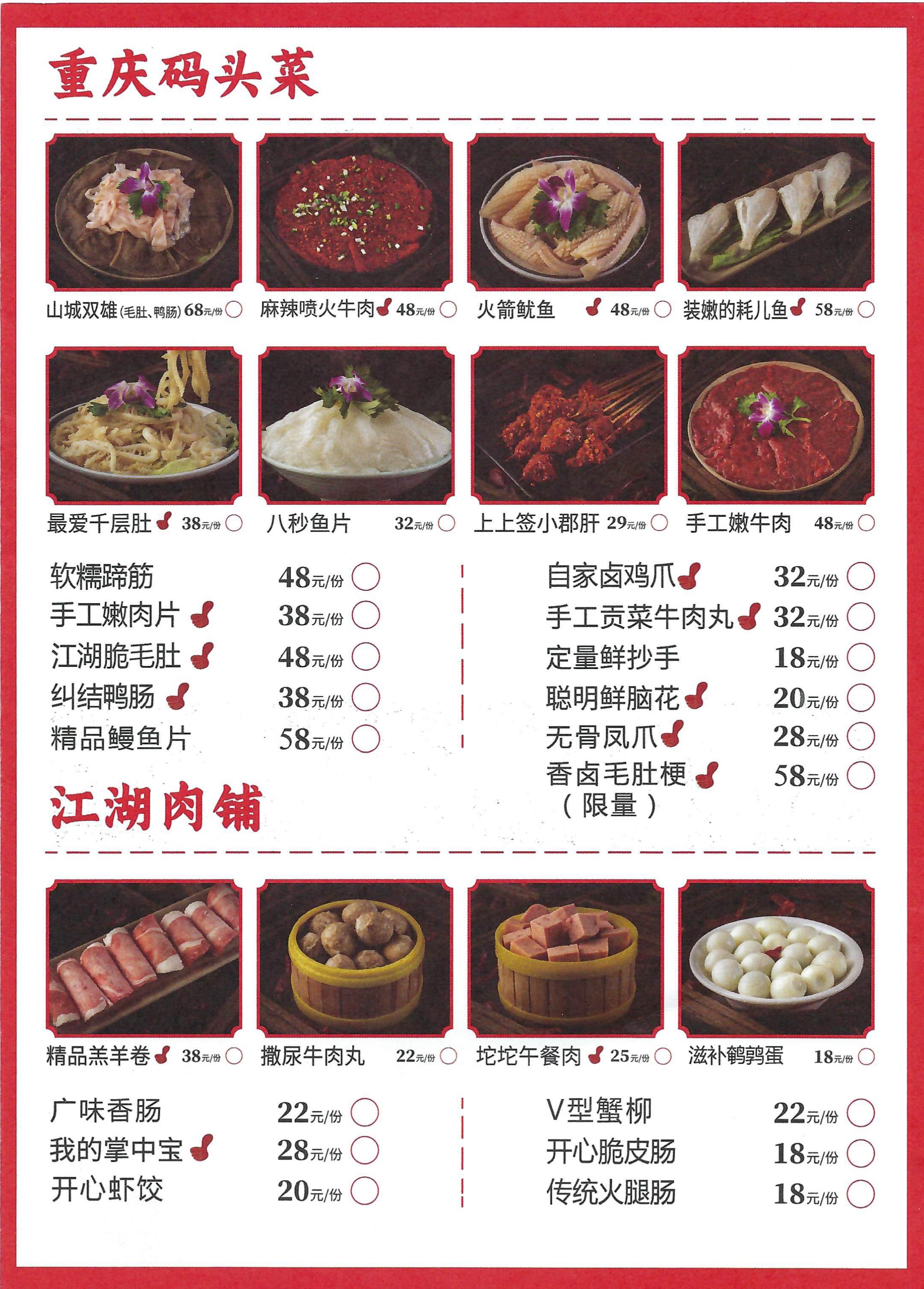


Picking the broth
The only part that is extremely important and will define your Chongqing hot pot experience for the night is picking the hot pot broth - the part on the top of the menu.
First thing you need to decide on is the type of broths that you go for. There is a "Sudoku" option containing only spicy broth divided in 9 parts (like Sudoku board would be) which will differ in heat allowing you to put some things in the hotter part of the dish (to cook more vigorously) and less hot to cook more gently and slowly.
However if you do not wish to eat only spicy food - especially when deciding to go for hot pot with children or people who have not yet developed their palette for spicy foods - you don't need to forgo the spice altogether.
There are dishes with two types of broth - a mild "bullion" in the middle and spicy broth around it. The two don't mix, so it allows you to accommodate for different tastes.
So that is the first decision you have to make and commit to. The second one is choosing the heat of the spicy broth - here you can go from mildly spicy (still with plenty of chillies, so don't be fooled!) to the extremely hot that probably only the locals can take - we were about to order the spicy one but I think the waitress was to scared about the wellbeing of our kids and kindly directed us towards a mild one.
Cooking ingredients
As you can see on the menu, you have a wide selection of meats, fish, tofu and all kinds of vegetables. You don't need to order too much all at once (as we did) - go for few things that look nice, you can always add more later. We particularly liked all the veggies.
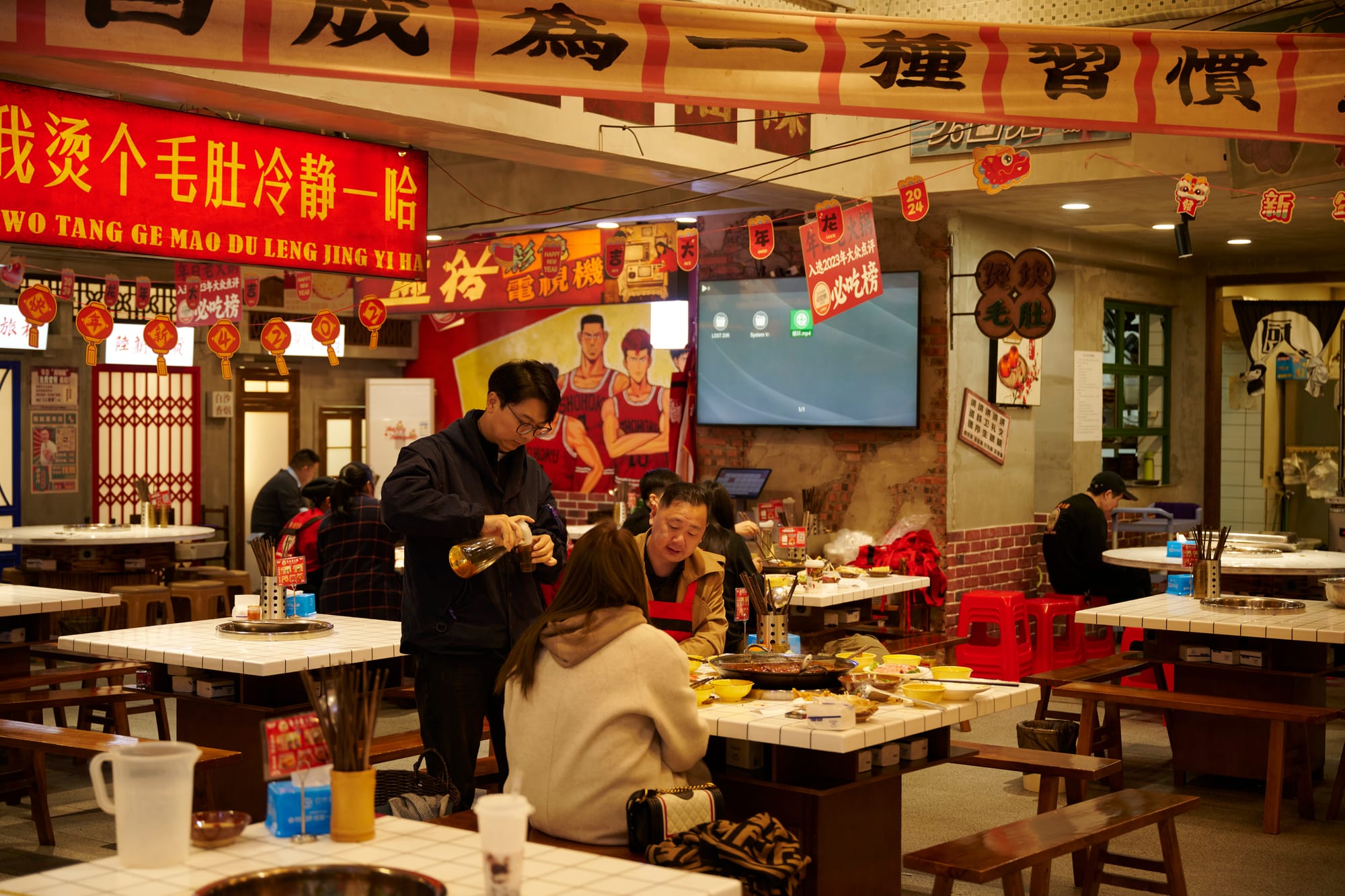
The Art of Eating Hot Pot
Partaking in a Chongqing Hot Pot feast is not merely about nourishing the body; it's a sensory experience that engages all the senses. Here are a few tips to elevate your hot pot adventure:
- Choose your heat level wisely: If you're not accustomed to spicy food, start with the non-spicy broth and gradually work your way up to the fiery depths of the spicy broth.
- Experiment with ingredients: Don't be afraid to mix and match different ingredients to create unique flavour combinations. From thinly sliced beef to plump shrimp, the possibilities are endless.
- Pace yourself: Hot Pot is meant to be enjoyed at a leisurely pace, so take your time savouring each bite and engaging in lively conversation with your dining companions.
- Cool down with palate cleansers: Keep a refreshing beverage on hand to cool down your palate between spicy bites. Traditional accompaniments like Chinese tea or a cold beer are popular choices.
- Embrace the communal spirit: Hot Pot is a communal dining experience meant to be shared with friends and family. Take advantage of the opportunity to bond over a shared love of food and culture.
🌶️Seems to confusing? Consider booking a private tour!
Conclusion
In the culinary landscape of China, few dishes command as much reverence and excitement as Chongqing Hot Pot.
Its rich history, bold flavours, and communal nature make it a quintessential dining experience for both locals and travellers alike.
So, the next time you find yourself in Chongqing or a restaurant offering authentic hot pot, don't hesitate to dive in – your taste buds will thank you for the spicy adventure!
Planning a trip to Chongqing? Don't miss my other guides:

